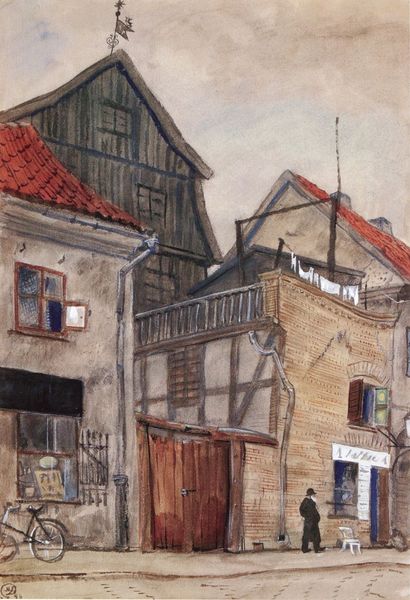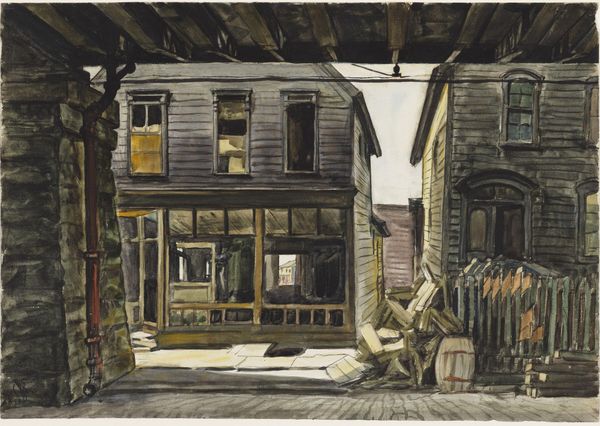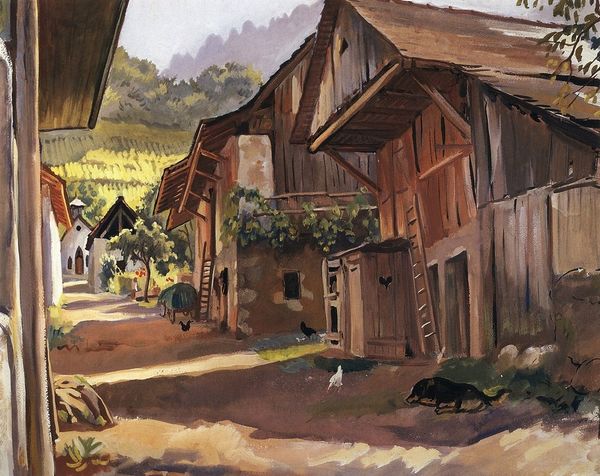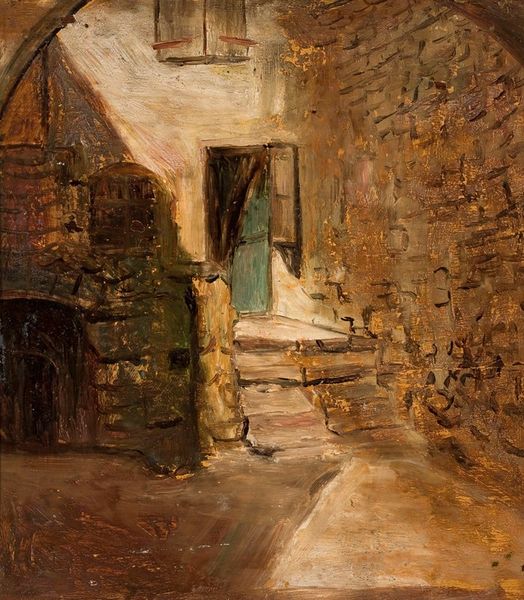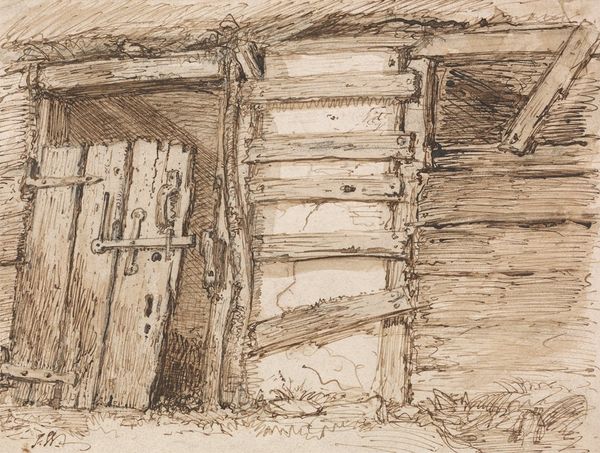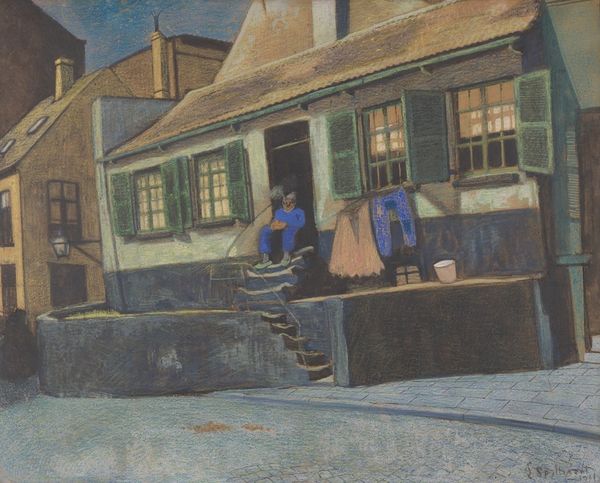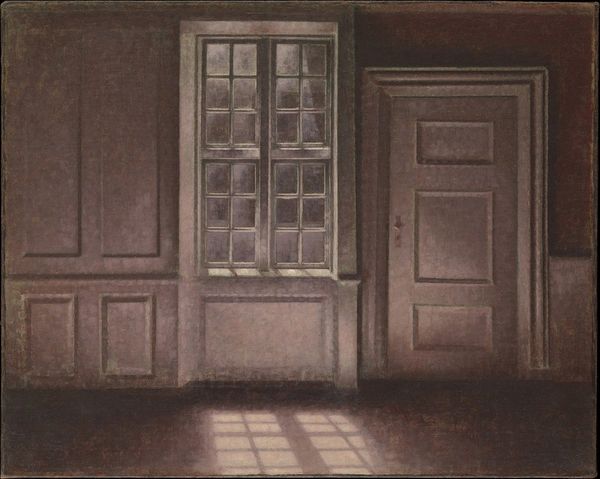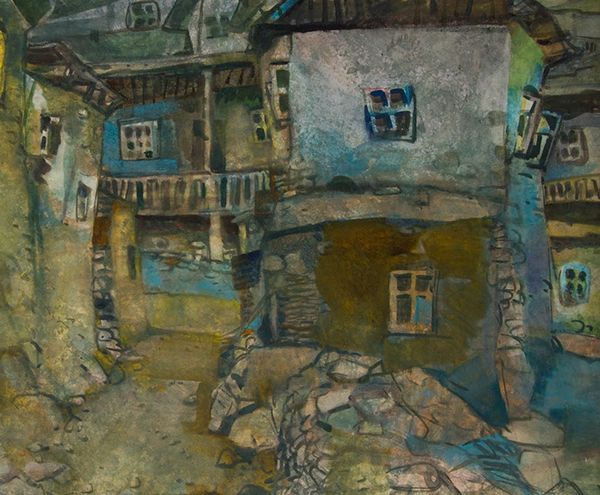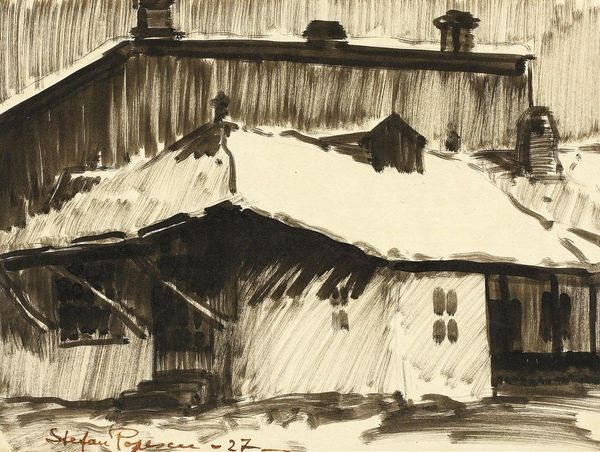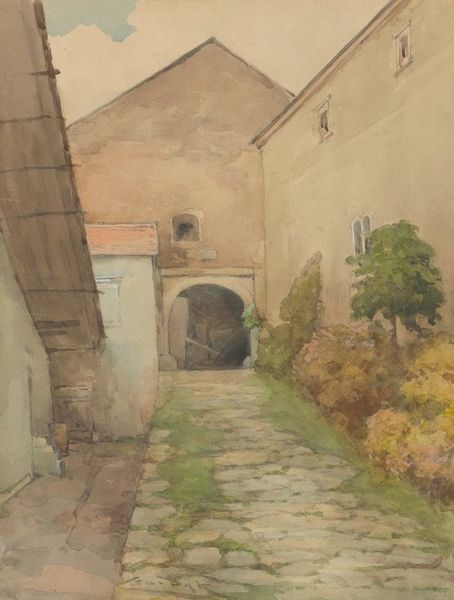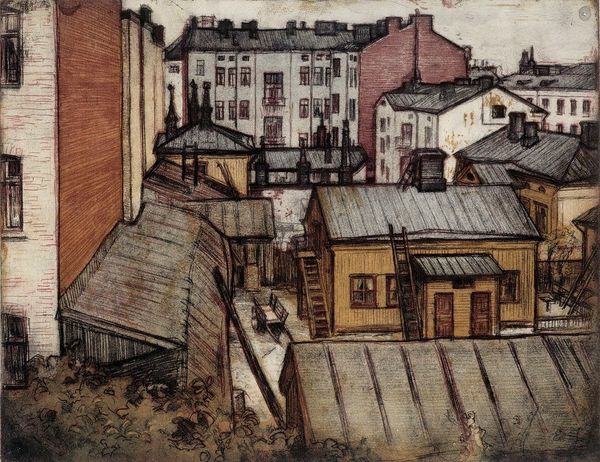
Copyright: Public Domain: Artvee
Editor: We are looking at "House in Porvoo," a watercolor and oil painting created by Albert Edelfelt in 1902. The painting evokes a certain quietness, maybe even loneliness with its deserted alleyway view. What do you see in this piece? Curator: It strikes me as a powerful statement about the lived realities within the city of Porvoo at the turn of the century. The intimate, almost claustrophobic perspective, and the somber tonality of the buildings. How do you think these elements speak to the sociopolitical realities of Finland under Russian rule? Editor: That’s interesting, I hadn't considered that. So, the limitations imposed on Finnish autonomy by Russia are possibly echoed in this constricting and unembellished view? Curator: Precisely. The apparent emptiness of the scene could symbolize the restrictions placed upon Finnish expression and agency at that time. The lack of human presence invites us to contemplate the effects of political repression on daily existence and identity. Also consider how intimism interacts with the other styles identified as landscape and realism. In what ways are these overlapping and perhaps clashing with each other? Editor: The landscape element highlights this specific place at a specific moment in time. Whereas the realism pulls us toward the gritty facts of a lived world. Intimism gives a window into this internal perspective of these things and, perhaps, how people felt about that time. Curator: It invites dialogue, doesn’t it? Art doesn't exist in a vacuum. It reflects the cultural, historical and political tensions of its time. Reflecting on what this means and looking for these threads empowers us to seek further connections in other artwork. Editor: Absolutely. Seeing the layers of history and the silent statements woven into this work offers me a fresh perspective and encourages further dialogue.
Comments
No comments
Be the first to comment and join the conversation on the ultimate creative platform.
